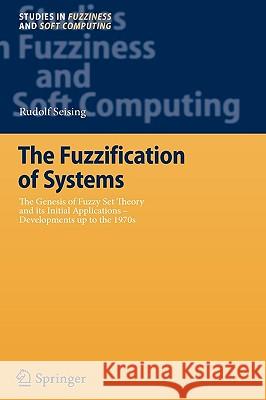The Fuzzification of Systems: The Genesis of Fuzzy Set Theory and Its Initial Applications - Developments Up to the 1970s » książka
The Fuzzification of Systems: The Genesis of Fuzzy Set Theory and Its Initial Applications - Developments Up to the 1970s
ISBN-13: 9783540717942 / Angielski / Twarda / 2007 / 412 str.
The Fuzzification of Systems: The Genesis of Fuzzy Set Theory and Its Initial Applications - Developments Up to the 1970s
ISBN-13: 9783540717942 / Angielski / Twarda / 2007 / 412 str.
(netto: 575,06 VAT: 5%)
Najniższa cena z 30 dni: 578,30
ok. 22 dni roboczych
Dostawa w 2026 r.
Darmowa dostawa!
In 1965 Lotfi Zadeh, a professor of electrical engineering at the University of California in Berkeley, published the first of his papers on his new Fuzzy Set Theory. Since the 1980s this mathematical theory of "unsharp amounts" has been applied in many different fields with great success. The word "fuzzy" has also become very well-known among non-scientists thanks to extensive advertising campaigns for fuzzy-controlled household appliances and to their prominent presence in the media, first in Japan and then in other countries. On the other hand, the story of how Fuzzy Set Theory and its earliest applications originated remains largely unknown. In this book, the history of Fuzzy Set Theory and the ways it was first used are incorporated into the history of 20th century science and technology. Influences from philosophy, system theory and cybernetics stemming from the earliest part of the 20th century are considered alongside those of communication and control theory from mid-century. Today, Fuzzy Set Theory is the core discipline of "soft computing," and provides new impetus for research in the field of Artificial Intelligence.











